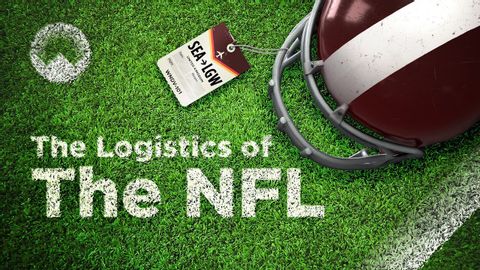The NFL's Logistics Problem
joey joey が 2021 年 06 月 11 日 に投稿  この条件に一致する単語はありません
この条件に一致する単語はありませんUS /sɪɡˈnɪfɪkənt/
・
UK /sɪgˈnɪfɪkənt/
US /pəˈtɛnʃəlɪ/
・
UK /pə'tenʃəlɪ/
US /ˈtɪpɪklɪ/
・
UK /ˈtɪpɪkli/
- v.i.(ある方向へ)徐々に進む : 向かう
- v.t.世話をする : 面倒を見る
- v.t./i.~する傾向がある
エネルギーを使用
すべての単語を解除
発音・解説・フィルター機能を解除

